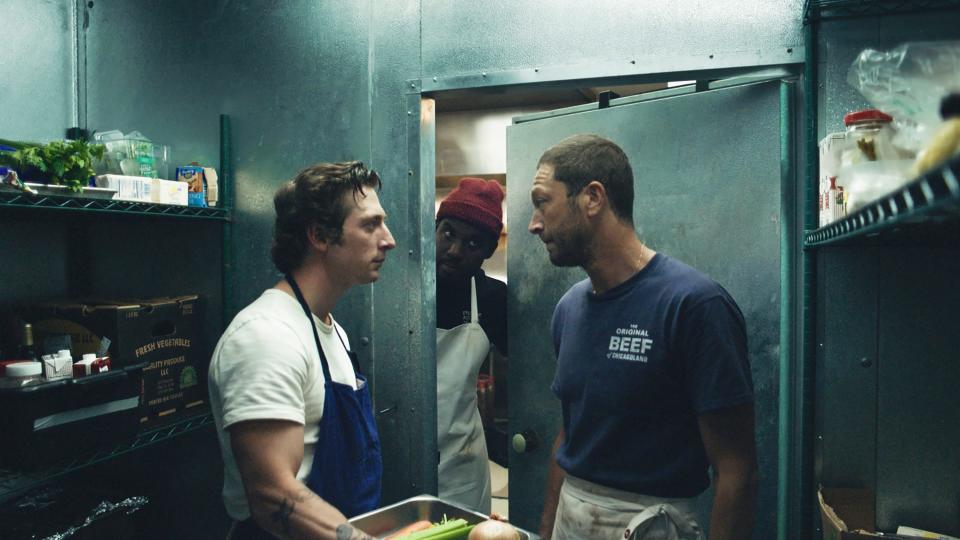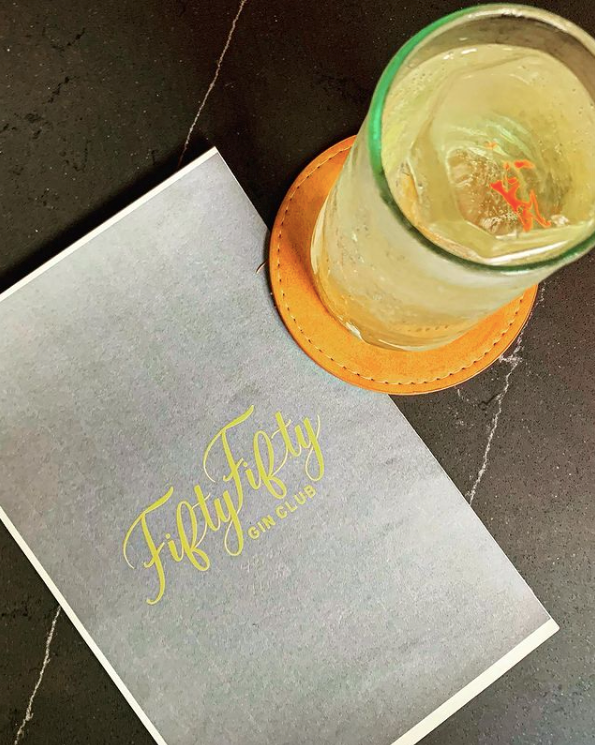Why 'The Bear' is the best show about restaurants ever made
Greetings, At the Table readers. I have a lot on my mind this week, so let's get right down to it.

If you've ever worked in a restaurant kitchen, you know that it's serious stuff. Everyone, from the executive chef to the dishwasher, depends on you to do your job right so they can do their jobs right, too. And they don’t suffer fools or incompetence lightly.
However, that commitment comes at a price. Often in the form of unforgiving hours, little time to come up for air and the knowledge that one busted oven, unpaid electric bill or broken toilet can throw an otherwise well-functioning kitchen into absolute chaos.
Which is why the new FX series “The Bear” is so important. The dramedy – about Carmen “Carmy” Berzatto, a James Beard Award-winning chef who leaves an Eleven Madison Park-type restaurant in New York to work at his family’s Italian beef restaurant, in Chicago – is probably the best depiction of the restaurant world I’ve ever seen. It will also give diners a sense of just how much stress the folks who work in the back of the house are under just to get your dinner plated, your bread baked and your dishes washed afterward.
The show takes place in the present as the restaurant is still inching its way back from the near-death experience of COVID-19. After having worked for an abusive (understatement) chef in New York, Carmy tries to establish a culture of respect and a sense of order via a French brigade-style kitchen at the restaurant. It's a system that many of its long-time employees find challenging and, at times, preposterous, especially when he brings in a young CIA-trained chef and charges her with overseeing the veteran employees of the kitchen.
"The Bear" also explores the transformation of restaurant kitchens – from places where bullying, sexist remarks and a general disrespect for employees once (and can still) run rampant – to a more accepting environment that respects the personal lives and creativity of its workers. At the same time, it also manages to show sympathy for certain characters who have been slow to keep up with those changes.
All eight episodes are now available for streaming on FX via Hulu.
How important is wining to dining?
Last week, a reader made a rather unsettling comment regarding my recent 15 best restaurants in Cincinnati list. It seems he took issue with how I’d let him down as a food writer due to my general lack of emphasis on restaurants’ wine lists.
“The Enquirer has never had a food critic who understands or acknowledges the importance of a wine list," he wrote. "I was hoping Kieth (sic) would change that.” He also disagreed with many of my selections, calling the list, well, “silly.”
To be fair, I did call the wine list at one of those restaurants "an oenophile's dream." That said, I’ve never been much of a wine drinker. Sure, I appreciate a nice glass of cabernet or riesling or chianti every now and then, but I much prefer beer, cocktails and bourbon.
At first, I shook off the comment. But then I started thinking about it. As a veteran food writer, am I doing a disservice to readers by not writing more about the wine programs at our local restaurants? The question bothered me so much that I took to Twitter (@keithpandolfi), asking the masses how important it was for a food writer to know a lot about wine.
“If you were strictly a restaurant reviewer, then fairly important," Walt wrote. "But, that doesn’t seem to be your gig. As a reader, that knowledge is of little value to me.”
“I’d say if your publication doesn’t employ a full-time wine/beer/spirits/cocktail writer, very important," wrote Robert Simonson, a friend of mine who covers cocktails, spirts and bars for the New York Times. (Note, The Enquirer does have a beer writer, but not a wine or cocktail writer.)
Meanwhile, an Enquirer colleague of mine made a good point by noting how, while some restaurants have let their wine programs slip or turned them over to distributors, “Others, and I’m thinking of Pleasantry, have far more wine offerings than entrees. The wine is an essential part of that restaurant’s being. Beer pairings also can be important, if a restaurant has enough beers on its list.”
Another excellent point was made by the celebrated wine expert Jon Bonne, who re-tweeted my post with this comment: “Depends on the beat but if it includes dining, considering beverage basically pays for all those nice restaurants people like to read about, i'd (sic) say, important.”
But I think my favorite response was from Shauna Sever, the Chicago-based author of the excellent cookbook "Midwest Made." (Why do Midwesterners always give the best advice?) She wrote, “Meh. Depends on what you want to write about. But I think it's more important to know what you don't know, and who to ask for help when there are holes in your work.” Amen, Shauna.
Taking all of these comments into account, it's safe to say I'll start paying closer attention to wine lists and make a note of it when I find those that are exemplary. That's the thing about being a food writer. No matter how long you do it, there's always more to learn.

Of all the gin joints in town …
After receiving an invite to the soft opening of Homemakers' new Barcelona-style gin and tonic bar in Over-the-Rhine, I took full advantage. (I love me some gin, you see, especially in the form of a Negroni.) Dubbed Fifty Fifty Gin Club, it’s a dark, intimate space carved out of the rear seating area of the original Homemakers Bar.
Starting Thursday, guests can reserve bar seats or a table and enjoy a gin and tonic (they have a huge variety of both of those ingredients), a martini, gimlet or other imaginative gin-based cocktails. (If you're not a gin fan, they carry other spirits as well.) While reservations are recommended, walk-ins are always welcome.
I ordered the watermelon Negroni, a refreshing, though potent, concoction of clarified carbonated watermelon juice, Hendrick's gin, vermouth and a little bit of salt. When owner Julia Petiprin asked me if I liked it, I told her it immediately took me back to the watermelon agua frescas I often order at Mexican restaurants, but with a much-appreciated kick.
Petiprin is also offering several bark snacks focusing on local ingredients and providers. And you would do well to order the warm (!) Sixteen Bricks sourdough with quark from Urban Stead cheese and locally made tomato preserves from Spring Valley Farms, in Caneyville, Kentucky. Fifty Fifty is located at 39 E. 13th St., just behind Homemakers Bar, and is open 4 to 11 p.m. Thursday through Saturday.
–
Alrighty then. I know this was a longer than usual newsletter, so thanks for sticking with me through it. I look forward to sharing some more thoughts with you next Wednesday. In the meantime, pour yourself a nice glass of wine (or a gin cocktail) and binge-watch "The Bear."
Keith Pandolfi covers food and dining for The Enquirer/Cincinnati.com. Click here for his most recent articles, and follow his latest dining adventures on Instagram @keithpandolfi or via the At the Table newsletter.
This article originally appeared on Cincinnati Enquirer: Why 'The Bear' is the best show about restaurants ever made

